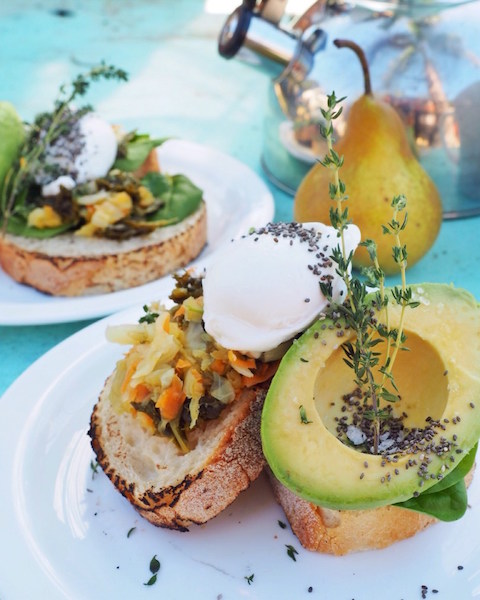
Sauerkraut is king of the superfoods.
Not only is it bursting with probiotics that help maintain a healthy gut and immune system, but it also contains significant levels of Vitamins: K, C & B6, Calcium, Potassium and Phosphorus.
Introducing sauerkraut into our daily diet has many positive health benefits, and unlike many other superfoods, it is also affordable when we make it ourselves.
One of the best things about sauerkraut, as opposed to some other superfoods, is that it tastes delicious! Sour, salty and rich in umami and other complex flavour compounds, Sauerkraut is incredible in salads, served with grilled meat, fish or veggies, on top of a cooked pizza, or served with poached eggs and avocado.
The possibilities are endless.
This is my superfood sauerkraut. The recipe contains kale (high in essential vitamins and iron), carrots (I find carrots add a lot of moisture, therefore reduce the required amount of salt and also contain beta carotene as well as heaps of vitamins), immune system-boosting ginger, garlic and turmeric.
Superfoods Sauerkraut
Makes 1 Large Jar.
Ingredients:
- 600g green cabbage (about half a large cabbage or one whole small one)
- 125g carrot (or one large carrot)
- 3 large kale leaves
- 1 clove garlic
- 1 clove sized piece ginger
- 1 clove sized piece fresh turmeric
- 1 tsp salt (I use macrobiotic or celtic sea salt as the natural minerals are retained)
Method:
Step 1
Remove the core of the cabbage and the outer two layers of leaves, put the leaves to one side (we’ll use them later on).
Step 2
Shred the cabbage and kale and place in a large bowl or container (big enough to get your hands in).
Step 3
Grate the carrot, ginger, turmeric and ginger into the cabbage and kale mixture. Add the salt and start to massage the veg with clean hands. Squeeze the mixture as if you were wringing out a wet cloth.
Step 4
After about five minutes there will be liquid collected in the bottom of the bowl, stop mixing and start to transfer the mixture and the liquid into a clean jar.
Step 5
As you place the mixture into the jar, press it down hard to compact it, either with your fingers or a wooden spoon. There should be no pockets of air visible.
Step 6
Once the jar is full, there should be a good amount of liquid covering your kraut, this is good as the liquid will keep the air out and allow the kraut to ferment in peace. The final touch is the retained leaves from the first step; take one and tear a piece just larger that the diameter of your jar and push it in. The leaf should keep all the sauerkraut submerged under the liquid.
Step 7
Seal the jar and leave out of direct sunlight. Place the jar in a bowl as the gasses that the fermentation process produces can push liquid out of the seal of your jar (this stuff really is alive). Now, how long it takes depends on the climate; I find that in temperate climates like Sydney and England, the kraut will take about 4 weeks to build up its levels of good bacteria. In sub-tropical areas such as South East Queensland it takes about 2 weeks. The tropics, 1 week.
Step 8
Once ready, open it up, remove and discard the leaf you put in the top. Breathe it in my friend, the smell of success. You have just created life! Refrigerate your new baby after opening.
Author: Micky Simpson
Images: Author’s own
Editor: Renée Picard







Read 0 comments and reply